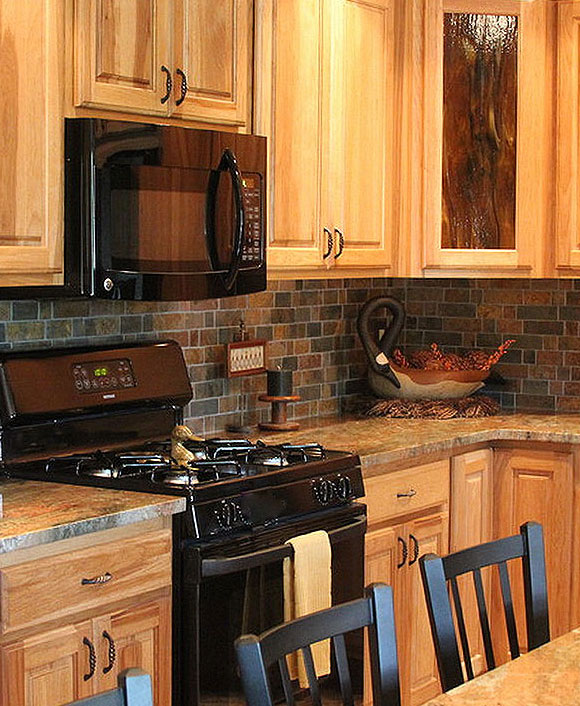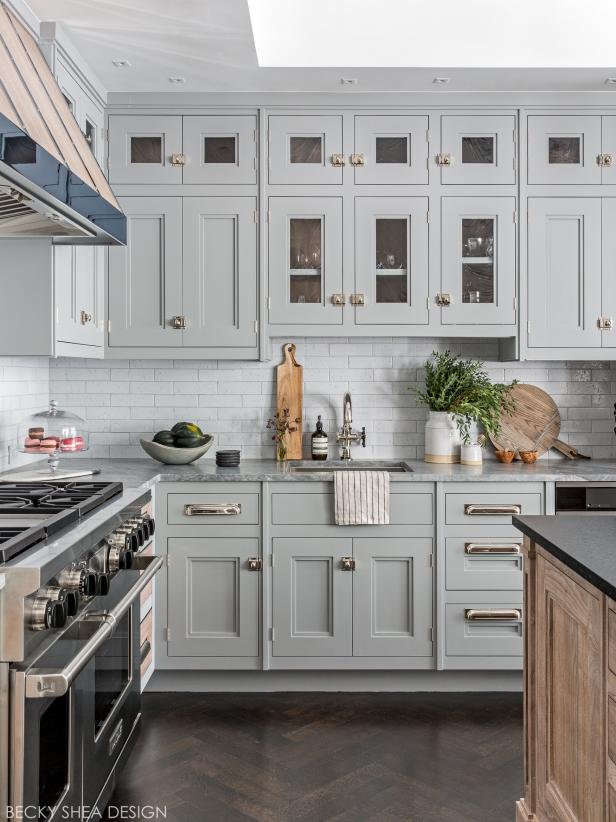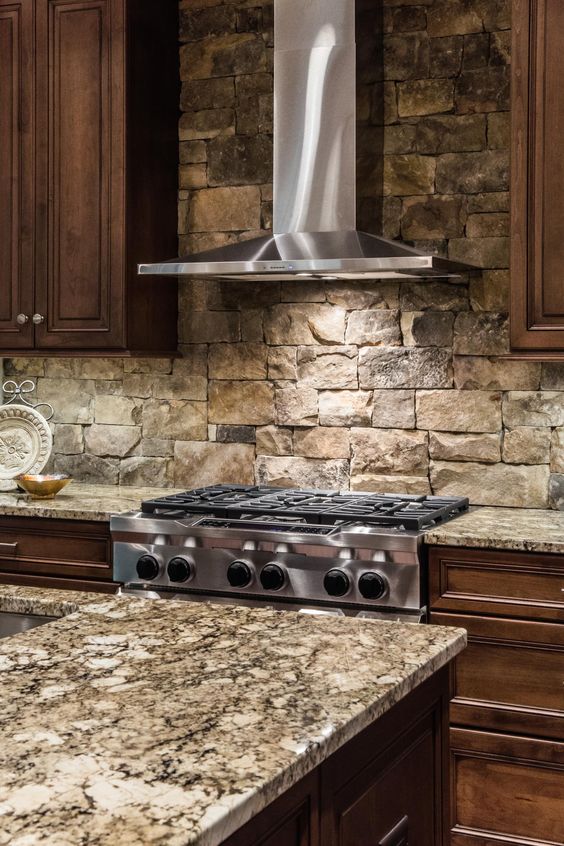When it comes to designing a kitchen that stands out, a slate backsplash offers a blend of natural beauty, durability, and versatility that few materials can match. Slate is a type of metamorphic rock, naturally formed over millions of years, giving it unique textures, color variations, and patterns that no two pieces are identical. This element of uniqueness is a significant reason why homeowners and designers are increasingly drawn to slate backsplashes in the kitchen.
Its rugged appearance, combined with subtle earth tones, provides a natural look that complements a variety of kitchen styles, from rustic and traditional to sleek and modern. Beyond aesthetics, slate is also highly durable, water-resistant, and relatively easy to maintain, which makes it an ideal choice for a backsplash that will withstand the heat, humidity, and messes often associated with a kitchen environment.

One of the remarkable qualities of a slate is its color variety. Slate backsplashes can be found in a spectrum of colors ranging from deep charcoal grays and soft blue tones to greens, reds, and even purples. These shades are often mixed within individual tiles or across a tiled surface, creating a rich tapestry of colors that can either blend subtly into the kitchen’s overall theme or stand out as a bold feature.
Unlike some materials, the color of slate remains consistent over time and rarely fades, even when exposed to light and regular cleaning. This consistency and variety allow slate to fit seamlessly into both minimalist kitchens that favor muted tones and more vibrant kitchens seeking a touch of natural color.

Installing a slate backsplash can be done in various patterns and styles, further adding to its versatility. Subway tiles, herringbone patterns, and staggered designs are all popular choices, each lending a distinct character to the kitchen. While the standard rectangular tile is a common choice, slate is also available in mosaic or even custom-cut designs, which can create a one-of-a-kind look. For homeowners looking to make a statement, using a larger slate slab as a backsplash creates a dramatic, continuous appearance that minimizes grout lines and emphasizes the natural grain of the stone. This seamless look not only adds to the aesthetic appeal but can also simplify cleaning.
Maintenance for a slate backsplash is generally straightforward, but it’s essential to seal the slate upon installation and re-seal it periodically to maintain its resistance to water and stains. Slate is a porous material, which means it can absorb liquids and oils if left untreated. Regular sealing helps to prevent these substances from penetrating the stone and causing discoloration or damage. Cleaning the slate backsplash is also simple, requiring only a mild cleaner and water. Abrasive cleaners should be avoided, as they can damage the surface. Instead, a gentle wipe-down after cooking and a deeper clean once a week will keep the backsplash looking fresh and vibrant.

The texture of slate, another distinctive feature, offers a tactile element to kitchen design. Some slate is naturally smooth, while other pieces have a rougher, more rustic finish. A smooth slate backsplash is easier to clean, but the textured variety brings an authentic, earthy quality to the kitchen.
Textured slate can hide fingerprints, minor scratches, and smudges better than a smoother surface, making it a practical option for busy kitchens. The choice between smooth and textured slate is mostly a matter of personal preference and should align with the overall style of the kitchen and the level of upkeep the homeowner is comfortable with.
Cost is another factor to consider when choosing a slate backsplash. Slate is generally more affordable than materials like marble or granite, making it an accessible option for many homeowners. However, the price can vary depending on the quality of the slate, its color, and the source of the stone.
While basic slate tiles can be budget-friendly, high-quality or imported slate with unique colors or patterns may be more expensive. It’s essential to compare prices and source materials from reputable vendors to ensure quality and authenticity, especially since some imitation slates may not offer the same durability or aesthetic appeal as genuine stone.

In terms of installation, slate can be a DIY project if you have some experience with tiling, but hiring a professional is often recommended due to the weight and fragility of the tiles. Slate is a relatively soft stone, which means it can chip or crack if mishandled during installation. A professional installer will ensure that the tiles are properly aligned, cut accurately, and securely attached to the wall.
Additionally, an expert can help you select the right grout color and finish, as this can significantly impact the look of the finished backsplash. While the natural variations in slate are beautiful, they require skill to align and install evenly, especially in complex patterns.
Slate’s environmental benefits add to its appeal as well. Being a natural material, slate is eco-friendly and biodegradable. The production process for slate tiles is less energy-intensive than that for synthetic materials, making it a sustainable choice for homeowners looking to reduce their environmental footprint. When sourced responsibly, slate can be an excellent choice for a green kitchen remodel, combining style and sustainability. Moreover, due to its durability, a slate backsplash is likely to last for decades with proper care, reducing the need for frequent replacements and minimizing waste.

Another consideration is the compatibility of slate with various countertop materials. Slate pairs beautifully with materials like wood, granite, and concrete, creating a cohesive look that balances texture and color. For example, pairing a slate backsplash with a granite countertop in a similar color family can create a harmonious, monochromatic look, while combining it with a lighter-colored quartz or marble countertop can provide a striking contrast. This adaptability makes slate a flexible option that can work with a range of materials and styles, whether you’re aiming for a contemporary design or a more traditional look.
Though slate is generally durable, it’s essential to be mindful of potential vulnerabilities. It is a natural material, so chips or cracks can occur, especially along the edges of tiles. However, minor damages can often be repaired without replacing the entire tile, and the natural texture and color variations of slate can help camouflage small imperfections. Moreover, scratches can usually be buffed out, and damaged areas can be resealed to restore the original appearance, making slate a forgiving choice for the high-traffic kitchen environment.
Installing a slate backsplash can be a smart investment as it often adds value to the home. The unique aesthetic of slate and its association with quality materials can make a kitchen feel more luxurious and sophisticated, which can be a selling point if you ever decide to put your home on the market. Real estate trends often show that kitchens with distinctive, high-quality finishes tend to attract more buyers and can sometimes justify a higher asking price. The timeless appeal of slate ensures that it will look as stylish in ten years as it does today, helping to preserve the value of your investment over time.

When designing a kitchen with a slate backsplash, it’s essential to consider lighting. Because slate often has darker hues, appropriate lighting can highlight its unique texture and color variations. Under-cabinet lighting or strategically placed LED lights can emphasize the depth and detail of the stone, bringing out its natural beauty. Even natural light can have a stunning effect, as the way slate reflects light can change throughout the day, offering a dynamic and evolving aesthetic. By enhancing the backsplash with proper lighting, you can make the slate a focal point in the kitchen.
For those who appreciate a custom look, slate offers excellent opportunities for personalization. The range of tile shapes, sizes, and colors available means that you can mix and match to create a unique pattern that reflects your taste. Whether you prefer a uniform look with a single color or a mosaic-style design with multiple shades, slate can be customized to suit any preference. Some homeowners even choose to have specific patterns or designs etched into the slate tiles, adding an extra layer of detail to the backsplash and making it a true work of art in the kitchen.
Last, the timeless appeal of slate ensures that it won’t go out of style, which can be a significant advantage in a kitchen design. While trends come and go, the natural beauty of slate has an enduring quality that complements both classic and modern designs. Unlike synthetic materials that may feel dated after a few years, slate’s organic look tends to age gracefully. With proper care, a slate backsplash can remain a beloved part of your kitchen’s aesthetic for decades, offering lasting value and beauty that’s unlikely to be eclipsed by passing trends.

Common Mistakes to Avoid
Not Sealing the Slate: One of the biggest mistakes is forgetting to seal the slate upon installation and skipping periodic resealing. Slate is porous, and without sealing, it can absorb liquids, leading to stains, water damage, or discoloration.
Using Harsh Cleaners: Avoid using acidic or abrasive cleaners on slate, as they can strip away the sealant and damage the stone. Stick to mild, non-abrasive cleaners specifically designed for natural stone.
Skipping Professional Installation: Due to its weight and fragility, slate can crack or chip during installation if not handled correctly. A professional installer can ensure a precise fit and help avoid costly mistakes.
Overloading the Texture: While textured slate is beautiful, too much texture can be challenging to clean, especially if it’s near a cooking area. Consider the balance between texture and practicality.
Incorrect Grout Selection: Choosing the wrong grout color or not sealing the grout can result in staining or visual clashes with the natural slate. Opt for a grout that complements the slate’s natural tones and seals it for longevity.
Ignoring Compatibility with Countertops: Some countertops may not pair well visually with certain slate colors or patterns, creating an unbalanced look. Coordinate both elements for harmony.

Is slate a good choice for a kitchen backsplash?
Slate is an excellent choice due to its natural beauty, durability, and versatility. It withstands heat, resists water when properly sealed, and has a unique look that complements a range of kitchen styles. Plus, it’s environmentally friendly, making it a sustainable option that adds lasting value to a kitchen.
How often do I need to seal my slate backsplash?
Sealing is recommended upon installation and ideally repeated every 1-2 years. Factors like cooking habits and cleaning frequency can impact how often you need to reseal. Regular sealing helps maintain slate’s resistance to stains and water, preserving its color and texture over time.
Can I install a slate backsplash myself?
While DIY installation is possible, professional installation is recommended. Slate tiles can be heavy and fragile, requiring skill to cut, align, and grout properly. A professional installer ensures a precise fit, especially for complex patterns, and can avoid potential damage during installation.

What’s the best way to clean a slate backsplash?
Use a mild, pH-neutral cleaner with a soft cloth or sponge to clean slate. Avoid acidic or abrasive cleaners, which can damage the sealant. Wiping down the backsplash regularly and giving it a deeper clean weekly helps maintain its appearance without risking damage.
Is slate a high-maintenance material for a kitchen?
Slate is relatively low-maintenance but requires occasional resealing and careful cleaning to prevent damage. Its natural texture can hide minor scratches or stains, making it a forgiving option. With regular, gentle care, the slate remains resilient and visually appealing.
Will a slate backsplash fit into a modern kitchen design?
Yes, slate’s range of colors and textures makes it suitable for both modern and traditional kitchens. Darker slate with smooth finishes works beautifully in minimalist, modern designs, while rougher, varied pieces complement rustic and classic styles, offering versatility for diverse tastes.

Stacked stone backsplash for kitchens

Patchwork Tile Backsplash Designs for Kitchen

Ivory Cabinets – Ideas on Foter Antique white kitchen cabinets

Related Posts:
- Wholesale Kitchen Backsplash
- Backsplash Kitchen Designs Pictures
- Latest Trends In Kitchen Backsplash 2022
- White Kitchen Cabinets With Gray Backsplash
- Kitchen Backsplash Vinyl Decals
- Stainless Steel Kitchen Backsplash Ideas
- Tile Backsplash Kitchen White Cabinets
- Home Depot Peel And Stick Kitchen Backsplash
- Ceramic Tile Murals For Kitchen Backsplash
- Tiling Kitchen Backsplash Do Yourself